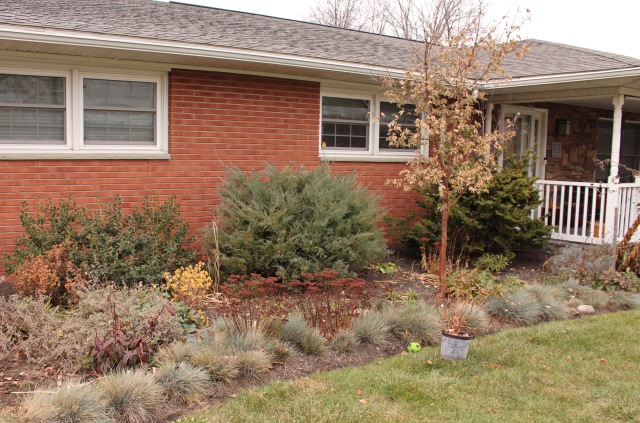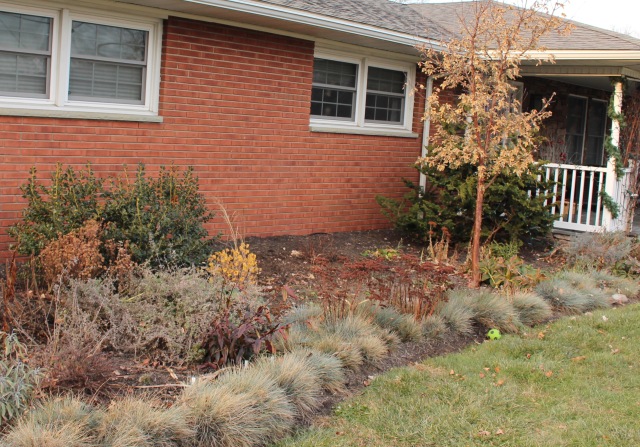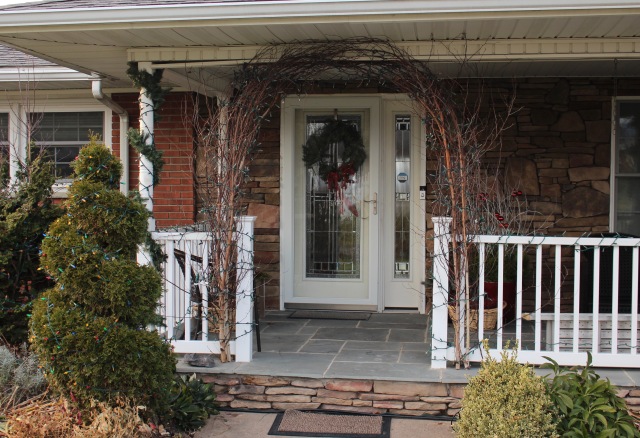Rather than face 9 inches of snow and a 12F (-11C) low lets take a trip back to just four days ago when the springtime warmth brought on an emergency trip to enjoy this year’s first snowdrop trip. It’s early of course, but we were on a mission this time and with the thermometer peaking at 60F (15C) it was now or never. The mission was to visit Dr. John Lonsdale at Edgewood Gardens, and take a tour of his overflowing snowdrop and cyclamen greenhouses before the warm weather set all the flowers to seed. We were not disappointed.

Snowdrops and hardy cyclamen filling the greenhouse benches.
John lives and gardens in Exton, Pennsylvania, just outside of Philadelphia and from the looks of things you’d never guess he has yet to quit his day job. These thousands of drops and bulbs (plus about a billion other plants spread out across his yard) are just a passionate hobby and sideline which is Edgewood Gardens. You may already know this since he is a regular feature at garden events and lectures up and down the East coast, but to see his garden and hear him talk you would think for sure he lives the life of a full time nurseryman.

Galanthus ‘Homersfield’ in the Lonsdale greenhouse.
I have plenty of pictures here and will likely ramble on too long so to keep things focused I’ll just add that John will be putting out his first snowdrop sales list this summer, and if you’re even just slightly interested in seeing what drops might be available send him an email via his Edgewood Gardens website.

I didn’t take nearly as many photos as I thought. Most of my visit was spent poking through the benches admiring all the characteristics and nuances that a plain little green and white winter flowering bulb can give.
John may be growing a few extra bulbs for sale, but it doesn’t take more than a walk up his driveway to recognize he’s plant obsessed with a weakness towards collecting.

Hundreds of carefully inventoried and labeled pots fill every square inch.
The full range of snowdrops is represented in the greenhouse, selections from seed grown species right alongside some of the most coveted European varieties, many of which are nearly impossible to find on either side of the Atlantic. This is even more impressive when you consider the cost and complications which are involved in bringing these plants into the States legally (something you’ll quickly notice when browsing overseas sources).

An all green snowdrop, Galanthus ‘Green Tear’, is one of those drops which broke records a few years ago when first offered on eBay. Someone thought $500 for a single bulb was just right for feeding their obsession.
When they’re all together like this it’s hard to pick out favorites…. or even distinguish one white drop from another, but a few stand out even to a beginner like myself.

The puffy pantaloons look of Galanthus ‘Diggory’ (pantaloons as in pants, not the twenty one pilots song)
Travel is supposed to broaden the mind but I’m afraid all this trip did was make my snowdrop obsession worse. I picked up several new names to add to the want-list…

Galanthus ‘Duckie’ on the left and top. I loved the wide flat petals.

I also like how the green mark inside Galanthus ‘Moortown’ bleeds up a bit and stains the inside. Plus it’s a nice big sturdy drop 🙂

Galanthus ‘Green Mile’, another sought after, deeply saturated green snowdrop.
Ok, so that might be plenty of snowdrops, but before we leave the greenhouse the hardy Cyclamen coum deserve some attention as well. Not to pat myself on the back too strongly, but these are the same plants which John offers for sale through his website, and somehow through a remarkable feat of self control I managed to limit myself to just four carefully selected plants.

Cyclamen coum at their peak in the greenhouse. It will be another few weeks before the ones I have here in my own garden begin to flower, and weather permitting they will be just as nice.
There were also plenty of seedlings coming along for future sales.

Various hardy and not so hardy cyclamen seedlings coming along in the “other” greenhouse. If you look closely you can even see some of the cool purple centered C hederifolium coming along in the center of the photo. Even the little babies color up!
… and that’s just in the greenhouses. Because of the exceptional temperatures things were pushing ahead outside as well.

The absolutely perfect Colchicum kesselringii, a late winter flowering relative of the more common fall blooming colcicum.

The first of the Adonis amurensis were coming up to take advantage of the sun.
And cactus. I barely mentioned the cactus beds, but there they were looking as if they were growing a few hundred miles West and South of this Philly garden.

An opuntia (prickly pear) which wrinkles up and takes on an unusual purple color once temperatures fall. I wonder if it blooms as nicely as the regular version, the spines sure do look just as fierce!
Oh and I’m sure you’re done with snowdrops, but there were more outside as well, both in bloom and just beginning to sprout.

I believe this is Galanthus ‘Mrs Macnamara’, a perfect beauty and surprisingly hardy and early. Word is this bunch has been going strong for a couple weeks already, and still looks this good.
Hellebores were also just beginning.

A few of many Helleborus niger (Christmas rose) which were coming up around the garden. Here on the slope they looked absolutely perfect.
Even a few of the trees and shrubs were showing signs of life. The witch hazels (Hamamelis) were in bloom all over the gardens, but the delicate flowers of the Japanese plum (Prunus mume) really look too delicate for a Pennsylvania February.

Prunus mume. Dr. Lonsdale told me the cultivar but at that point I’m pretty sure my brain was way too full to retain any lengthy Japanese names.
I could easily spend all day or another day at Edgewood Gardens, but if you’re at all familiar with our Philly snowdrop jaunts you’ll know we always fit in way too much for the still short days. Before our greenhouse visit we happily dropped an hour and a half at a local park to again admire the sheets of naturalized winter aconite (Eranthis Hyemalis) which grow there.

The forest floor was buzzing with hundreds of honeybees taking advantage of these first flowers of 2017.
We even managed to find a few snowdrops just coming up. What a perfect combination, and quite a contrast to the deer chewed pachysandra, weeds and brambles.

Naturalized eranthis and snowdrop bulbs. Given a few acres and about 150 years and you might also have a similar show.
We were so lucky with the weather this year. Snowdropping in February is one thing, doing it in short sleeves is unheard of even in the warmest of years. Hopefully when March rolls around and it’s time to head north to visit Hitch Lyman and Temple Gardens we will be just as lucky. History says otherwise though.

Temperatures dropped to normal within 24 hours of our visit and we finally got a good coating of snow to cover up any signs of spring. It now looks more normal for February, but that doesn’t explain why the kids can’t just go sledding in their snow pants like everyone else.
As usual a special thanks goes out to Paula for her annual enthusiasm for these trips, and also a big thanks goes out to Dr. Lonsdale for being so generous with his time, his knowledge and also his garden. Truth be told I may have just kind of invited myself over that day, but you would never have guessed it by how warmly I was received by both John and by his other (more scheduled) visitors. It was great getting to see everyone and I hope we do this again!























